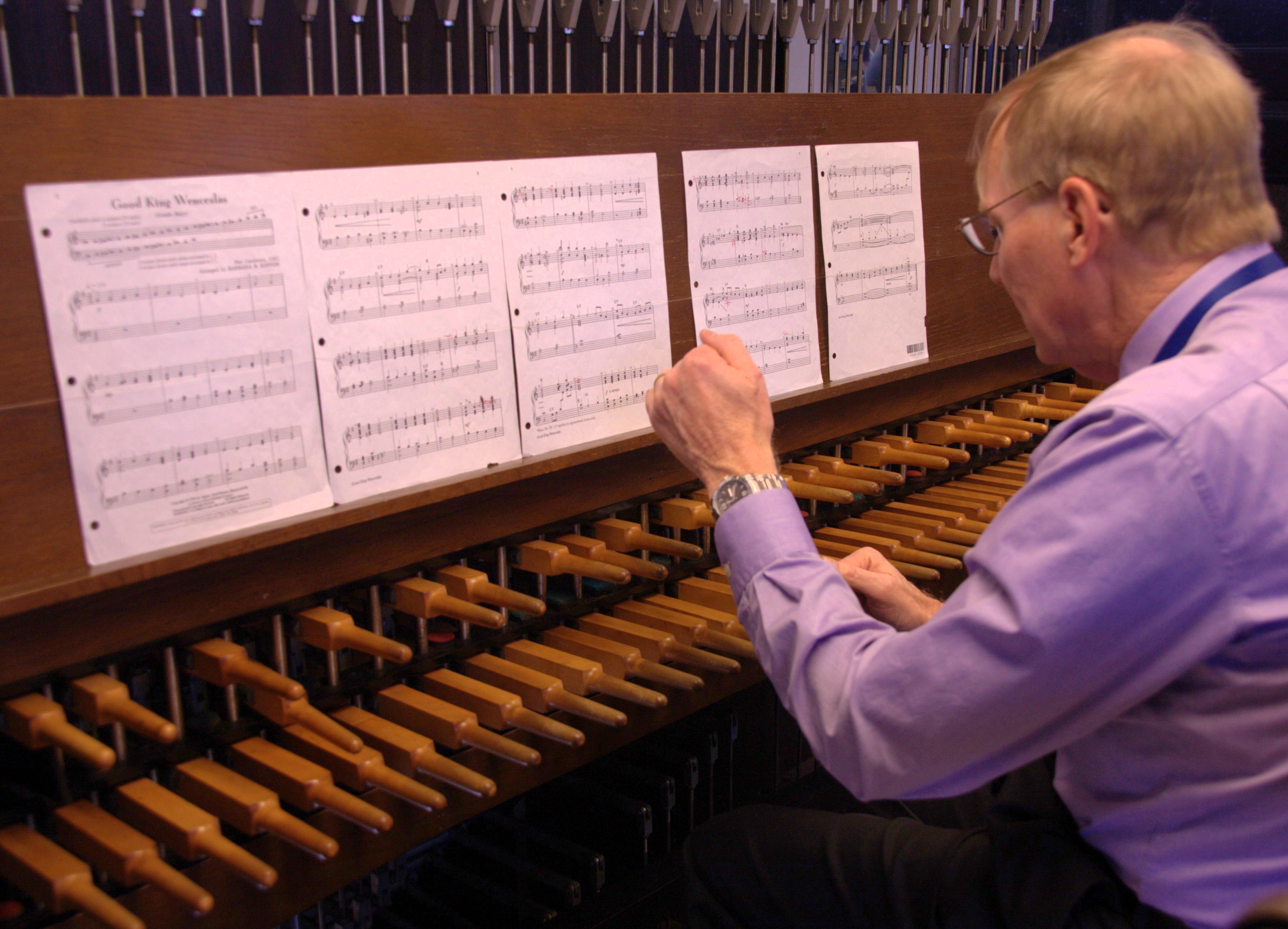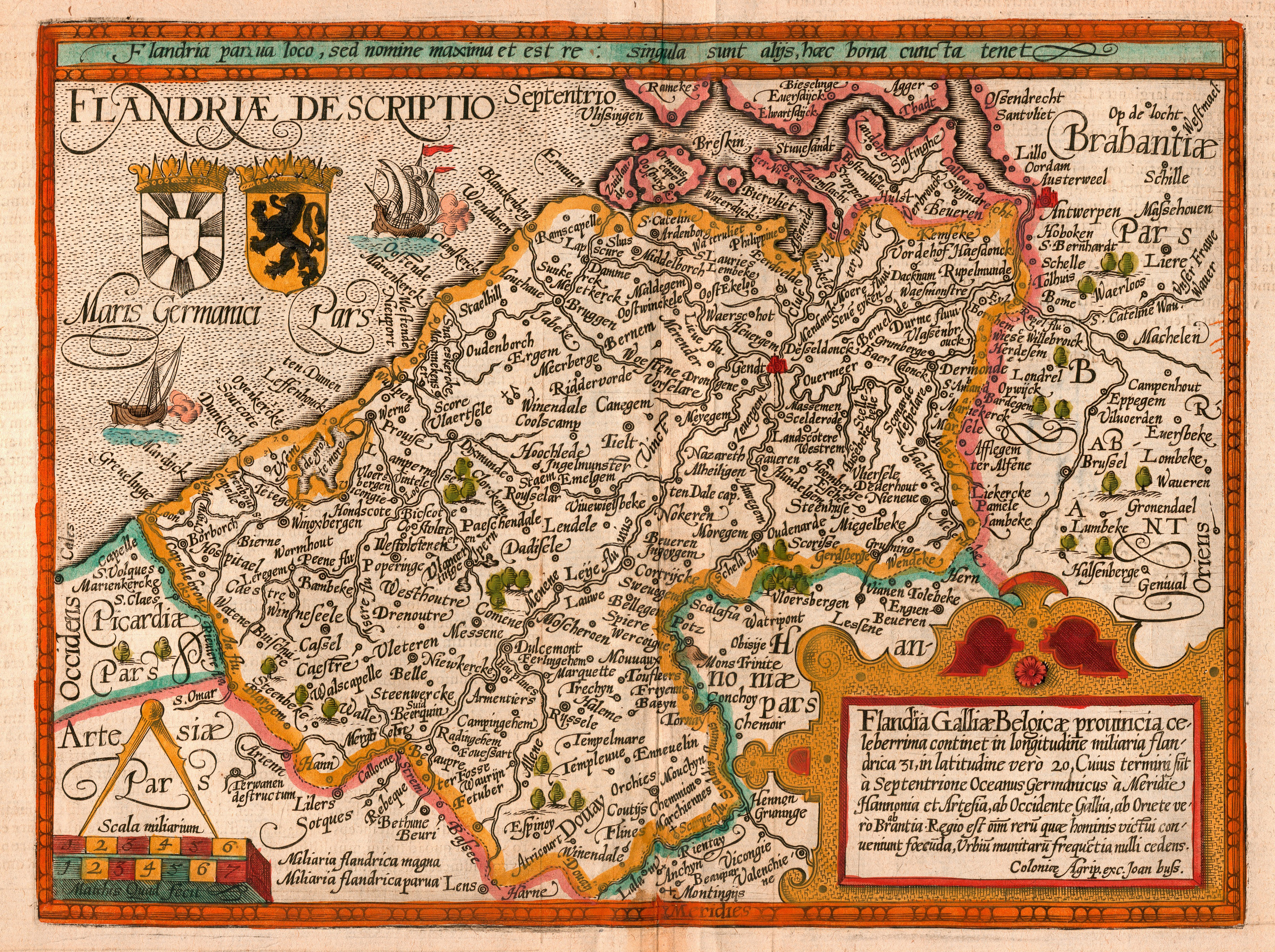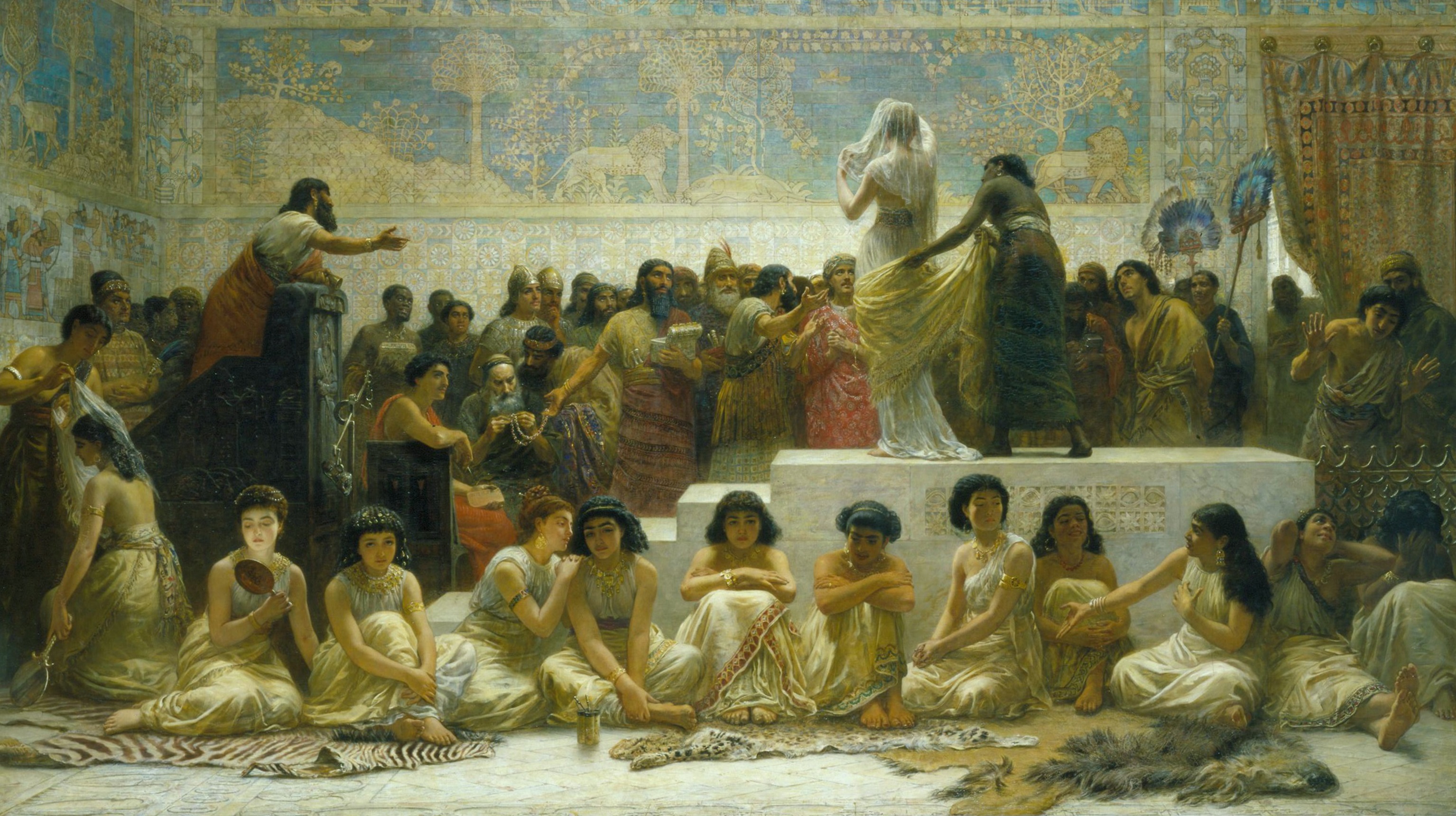|
De Gruytters Carillon Book
The De Gruytters carillon book () is a manuscript notebook that the Dutch Baroque musician Joannes de Gruytters used for performance on the carillon of the city of Antwerp. It contains 194 pieces of music, mostly arrangements and a few original compositions, in the form of marches, gavottes, arias, gigues, preludes, and minuets, among others. The manuscript, dated 1746 and discovered in 1922, provides a glimpse into the music of the 18th century that was often played on carillons. It is preserved at the Royal Conservatoire Antwerp. History In the 18th century, the Antwerp Cathedral possessed two carillons cast by the Hemony brothers. One belonged to the city of Antwerp, and the other was owned by the cathedral. On 22 October 1740, following the death of the previous appointee, Joannes de Gruytters (1709–1772); was appointed the carillonneur of the two instruments. He had performed in a competition to win the job. To financially support himself and his family, ... [...More Info...] [...Related Items...] OR: [Wikipedia] [Google] [Baidu] |
Carillon Music
A carillon ( , ) is a pitched percussion instrument that is played with a keyboard and consists of at least 23 bells. The bells are cast in bronze, hung in fixed suspension, and tuned in chromatic order so that they can be sounded harmoniously together. They are struck with clappers connected to a keyboard of wooden batons played with the hands and pedals played with the feet. Often housed in bell towers, carillons are usually owned by churches, universities, or municipalities. They can include an automatic system through which the time is announced and simple tunes are played throughout the day. Carillons come in many designs, weights, sizes, and sounds. They are among the world's heaviest instruments, and the heaviest carillon weighs over . Most weigh between . To be considered a carillon, a minimum of 23 bells are needed; otherwise, it is called a chime. Standard-sized instruments have about 50, and the world's largest has 77 bells. The appearance of a carillon depends ... [...More Info...] [...Related Items...] OR: [Wikipedia] [Google] [Baidu] |
March (music)
A march, as a musical genre, is a piece of music with a strong regular rhythm which in origin was expressly written for marching to and most frequently performed by a military band. In mood, marches range from the moving death march in Wagner's ''Götterdämmerung'' to the brisk military marches of John Philip Sousa and the martial hymns of the late 19th century. Examples of the varied use of the march can be found in Beethoven's ''Eroica'' Symphony, in the Marches Militaires of Franz Schubert, in the Marche funèbre in Chopin's Sonata in B flat minor, the "'' Jäger March''" in the by Jean Sibelius, and in the Dead March in Handel's ''Saul''. Characteristics Marches can be written in any time signature, but the most common time signatures are , ('' alla breve'' , although this may refer to 2 time of Johannes Brahms, or ''cut time''), or . However, some modern marches are being written in or time. The modern march tempo is typically around 120 beats per minute. M ... [...More Info...] [...Related Items...] OR: [Wikipedia] [Google] [Baidu] |
Jef Denyn
Joseph Guillaume François "Jef" Denyn ( ; 19 March 1862 – 2 October 1941) was a Belgian carillon player from Mechelen. He originally studied to be an engineer. His carilloning career started in 1881 when his father, the official carilloneer of Mechelen, went blind and became unable to play. This caused Denyn to take over. In 1887, Denyn was recognised for his skills and officially appointed to the same position his father had held. He used his engineering knowledge to vastly improve the technology surrounding carillons, which is now used all over Europe and the United States. In 1922, he founded the world's first and most renowned international higher institute of campanology, later named after him, the Royal Carillon School "Jef Denyn" () in Mechelen. During the First World War, he, his wife Helene, son and four daughters were among those Belgian refugees who fled to England. The Denyn family were taken in by organist and musicologist William Wooding Starmer (18 ... [...More Info...] [...Related Items...] OR: [Wikipedia] [Google] [Baidu] |
Flemish People
Flemish people or Flemings ( ) are a Germanic peoples, Germanic ethnic group native to Flanders, Belgium, who speak Flemish Dutch. Flemish people make up the majority of Belgians, at about 60%. ''Flemish'' was historically a geographical term, as all inhabitants of the medieval County of Flanders in modern-day Belgium, France and the Netherlands were referred to as "Flemings" irrespective of their ethnicity or language. The contemporary region of Flanders comprises a part of this historical county, as well as parts of the medieval Duchy of Brabant and the medieval County of Loon, where the modern national identity and Flemish culture, culture gradually formed. History The sense of "Flemish" identity increased significantly after the Belgian Revolution. Prior to this, the term "" in the Dutch language was in first place used for the inhabitants of the former County of Flanders. Flemish, however, had been used since the 14th century to refer to the language and dialects of both ... [...More Info...] [...Related Items...] OR: [Wikipedia] [Google] [Baidu] |
Auction
An auction is usually a process of Trade, buying and selling Good (economics), goods or Service (economics), services by offering them up for Bidding, bids, taking bids, and then selling the item to the highest bidder or buying the item from the lowest bidder. Some exceptions to this definition exist and are described in the section about different #Types, types. The branch of economic theory dealing with auction types and participants' behavior in auctions is called auction theory. The open ascending price auction is arguably the most common form of auction and has been used throughout history. Participants bid openly against one another, with each subsequent bid being higher than the previous bid. An auctioneer may announce prices, while bidders submit bids vocally or electronically. Auctions are applied for trade in diverse #Contexts, contexts. These contexts include antiques, Art auction, paintings, rare collectibles, expensive wine auction, wines, commodity, commodities, l ... [...More Info...] [...Related Items...] OR: [Wikipedia] [Google] [Baidu] |
Bibliophile
A bookworm or bibliophile is an individual who loves and frequently reads or collects books. Bibliophilia or bibliophilism is the love of books. Bibliophiles may have large, specialized book collections. They may highly value old editions, autographed copies, or illustrated versions. Bibliophilia is distinct from bibliomania, a compulsive obsession to collect books which can affect interpersonal relationships or health. The term "bibliophile" has been in use since 1820 and has been associated with historical figures like George Spencer, 2nd Earl Spencer, Lord Spencer and J.P. Morgan, who were known for their extensive book collections. Profile The classic bibliophile loves to read, admires and collects books, and often amasses a large and specialized collection. Bibliophiles usually possess books they love or that hold special value, as well as old editions with unusual bindings, autographed, or illustrated copies. "Bibliophile" is an appropriate term for a minority of those w ... [...More Info...] [...Related Items...] OR: [Wikipedia] [Google] [Baidu] |
City Council
A municipal council is the legislative body of a municipality or local government area. Depending on the location and classification of the municipality it may be known as a city council, town council, town board, community council, borough council, rural council, village council, board of aldermen, or board of selectmen. Australia Because of the differences in legislation between the states, the exact definition of a city council varies. However, it is generally only those local government areas which have been specifically granted city status (usually on a basis of population) that are entitled to refer to themselves as cities. The official title is "Corporation of the City of ______" or similar. Some of the urban areas of Australia are governed mostly by a single entity (e.g. Brisbane and other Queensland cities), while others may be controlled by a multitude of much smaller city councils. Also, some significant urban areas can be under the jurisdiction of otherwise rural ... [...More Info...] [...Related Items...] OR: [Wikipedia] [Google] [Baidu] |
Violin
The violin, sometimes referred to as a fiddle, is a wooden chordophone, and is the smallest, and thus highest-pitched instrument (soprano) in regular use in the violin family. Smaller violin-type instruments exist, including the violino piccolo and the pochette (musical instrument), pochette, but these are virtually unused. Most violins have a hollow wooden body, and commonly have four strings (music), strings (sometimes five-string violin, five), usually tuned in perfect fifths with notes G3, D4, A4, E5, and are most commonly played by drawing a bow (music), bow across the strings. The violin can also be played by plucking the strings with the fingers (pizzicato) and, in specialized cases, by striking the strings with the wooden side of the bow (col legno). Violins are important instruments in a wide variety of musical genres. They are most prominent in the Western classical music, Western classical tradition, both in ensembles (from chamber music to orchestras) and as solo ... [...More Info...] [...Related Items...] OR: [Wikipedia] [Google] [Baidu] |
Organ (music)
Carol Williams performing at the West_Point_Cadet_Chapel.html" ;"title="United States Military Academy West Point Cadet Chapel">United States Military Academy West Point Cadet Chapel. In music, the organ is a keyboard instrument of one or more Pipe organ, pipe divisions or other means (generally woodwind or electronic musical instrument, electric) for producing tones. The organs have usually two or three, sometimes up to five or more, manuals for playing with the hands and a pedalboard for playing with the feet. With the use of registers, several groups of pipes can be connected to one manual. The organ has been used in various musical settings, particularly in classical music. Music written specifically for the organ is common from the Renaissance to the present day. Pipe organs, the most traditional type, operate by forcing air through pipes of varying sizes and materials, each producing a different pitch and tone. These instruments are commonly found in churches and co ... [...More Info...] [...Related Items...] OR: [Wikipedia] [Google] [Baidu] |
Music Competition
A music competition is a public event designed to identify and award outstanding musical ensembles, solo (music), soloists, composers, conducting, conductors, musicologists or compositions. Pop music competitions are music competitions which are held to find pop starlets. Examples of music competitions in popular music include the Eurovision Song Contest, the Sanremo Music Festival, Open Mic UK, the All-Japan Band Association annual contest, Live and Unsigned, and ''American Idol''. History European classical art music uses competitions to provide a public forum that identifies the strongest young players and helps them start their professional careers (see List of classical music competitions). Popular instrumental ensembles such as brass bands and school bands have also long relied on competitions and festivals to promote their musical genres and recognize high levels of achievement. In the recent decades, large competitions have also developed in the field of popular music to ... [...More Info...] [...Related Items...] OR: [Wikipedia] [Google] [Baidu] |
Carillonneur
A carillon ( , ) is a pitched percussion instrument that is played with a musical keyboard, keyboard and consists of at least 23 bells. The bells are Bellfounding, cast in Bell metal, bronze, hung in fixed suspension, and Musical tuning, tuned in Chromatic scale, chromatic order so that they can be sounded harmoniously together. They are struck with clappers connected to a keyboard of wooden batons played with the hands and Pedal keyboard, pedals played with the feet. Often housed in bell towers, carillons are usually owned by churches, universities, or municipalities. They can include an automatic system through which the time is announced and simple tunes are played throughout the day. Carillons come in many designs, weights, sizes, and sounds. They are among the world's heaviest instruments, and the heaviest carillon weighs over . Most weigh between . To be considered a carillon, a minimum of 23 bells are needed; otherwise, it is called a chime (bell instrument), chime. S ... [...More Info...] [...Related Items...] OR: [Wikipedia] [Google] [Baidu] |






